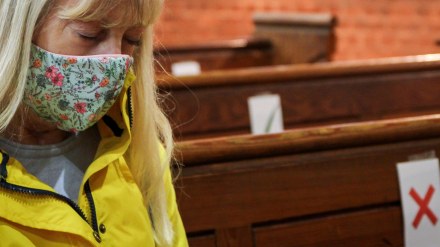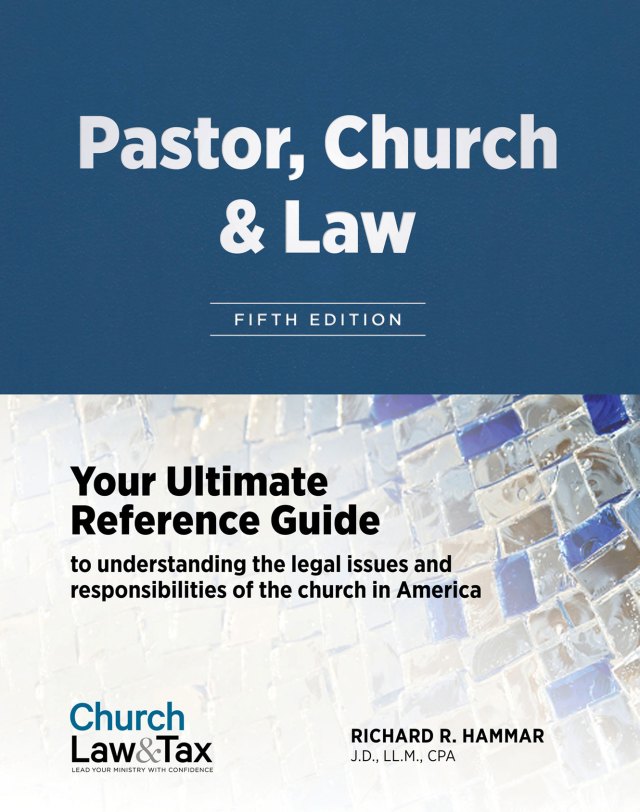Update: Since this ruling, the Supreme Court has made a number of other decisions that have reshaped religious liberty challenges brought against pandemic-related restrictions. For Richard Hammar’s review of all of these decisions, see “Assessing US Supreme Court Rulings on Pandemic Restrictions.”
For the third time in six months, the United States Supreme Court has addressed the constitutionality of government restrictions on religious worship in the face of the ongoing COVID-19 pandemic. This time the Court sided with religion.
Background
In its two previous rulings, a sharply divided Court concluded that the inherent power of states to protect public health and safety outweighed the constitutional right of churches to gather for worship. But in the first of these cases, Chief Justice John Roberts, in a concurring opinion siding with the Court’s four liberal Justices to form a majority, observed:
Although California’s guidelines place restrictions on places of worship, those restrictions appear consistent with the Free Exercise [of religion] Clause of the First Amendment. Similar or more severe restrictions apply to comparable secular gatherings, including lectures, concerts, movie showings, spectator sports, and theatrical performances, where large groups of people gather in close proximity for extended periods of time. And the Order exempts or treats more leniently only dissimilar activities, such as operating grocery stores, banks, and laundromats, in which people neither congregate in large groups nor remain in close proximity for extended periods. South Bay United Pentecostal Church, et al. v. Newsom, 140 S. Ct. 1613 (2020).
This is an important clarification. The Constitution permits state and local governments to enact restrictions on public gatherings in the interest of public health and safety, and such restrictions can be applied to churches so long as churches are treated the same as other “comparable secular gatherings.” Chief Justice Roberts noted that “comparability” involves consideration of the following factors:
- The number of persons who will be gathering
- The physical proximity of persons in the group
- The length of time persons will gather
The Court, in a second 5-4 decision issued by the same majority in July of 2020, again sided with government authorities by denying a Nevada church’s request for an exemption to pandemic-related building capacity limits.
The Court sides with New York congregations
The third case, decided on November 25, 2020, involved challenges by a Roman Catholic diocese and a synagogue (the “applicants”) to an Executive Order issued by New York Governor Andrew Cuomo that imposed severe restrictions on attendance at religious services in areas classified as “red” or “orange” zones. Roman Catholic Diocese of Brooklyn, New York v. Cuomo, 592 US ____ (2020).
In red zones, no more than 10 people may attend each religious service, and in orange zones, attendance is capped at 25.
The applicants argued that the Executive Order treats houses of worship much more harshly than comparable secular facilities. The Court agreed:
In a red zone, while a synagogue or church may not admit more than 10 persons, businesses categorized as “essential” may admit as many people as they wish. And the list of “essential” businesses includes things such as acupuncture facilities, camp grounds, garages, as well as many whose services are not limited to those that can be regarded as essential, such as all plants manufacturing chemicals and microelectronics and all transportation facilities. . . . The disparate treatment is even more striking in an orange zone. While attendance at houses of worship is limited to 25 persons, even non-essential businesses may decide for themselves how many persons to admit. These categorizations lead to troubling results. At the hearing in the District Court, a health department official testified about a large store in Brooklyn that could “literally have hundreds of people shopping there on any given day.” Yet a nearby church or synagogue would be prohibited from allowing more than 10 or 25 people inside for a worship service. And the Governor has stated that factories and schools have contributed to the spread of COVID-19 . . . but they are treated less harshly than the Diocese’s churches . . . which have admirable safety records.
The Court concluded:
The loss of First Amendment freedoms, for even minimal periods of time, unquestionably constitutes irreparable injury. If only 10 people are admitted to each service, the great majority of those who wish to attend Mass on Sunday . . . will be barred. And while those who are shut out may in some instances be able to watch services on television, such remote viewing is not the same as personal attendance. Catholics who watch a Mass at home cannot receive communion. . . . But even in a pandemic, the Constitution cannot be put away and forgotten. The restrictions at issue here, by effectively barring many from attending religious services, strike at the very heart of the First Amendment’s guarantee of religious liberty.
Justice Neil Gorsuch issued a concurring opinion agreeing with the Court’s ruling. Here are excerpts:
Government is not free to disregard the First Amendment in times of crisis. At a minimum, that Amendment prohibits government officials from treating religious exercises worse than comparable secular activities, unless they are pursuing a compelling interest and using the least restrictive means available. Yet recently, during the COVID pandemic, certain States seem to have ignored these long-settled principles. Today’s case supplies just the latest example. New York’s Governor has asserted the power to assign different color codes to different parts of the State and govern each by executive decree. In “red zones,” houses of worship are all but closed—limited to a maximum of 10 people. . . . In “orange zones,” it’s not much different. Churches . . . are limited to a maximum of 25 people. These restrictions apply even to the largest cathedrals . . . which ordinarily hold hundreds. And the restrictions apply no matter the precautions taken, including social distancing, wearing masks, leaving doors and windows open, forgoing singing, and disinfecting spaces between services.
At the same time, the Governor has chosen to impose no capacity restrictions on certain businesses he considers “essential.” And it turns out the businesses the Governor considers essential include hardware stores, acupuncturists, and liquor stores. Bicycle repair shops, certain signage companies, accountants, lawyers, and insurance agents are all essential too. So, at least according to the Governor, it may be unsafe to go to church, but it is always fine to pick up another bottle of wine, shop for a new bike, or spend the afternoon exploring your distal points and meridians. Who knew public health would so perfectly align with secular convenience? As almost everyone on the Court today recognizes, squaring the Governor’s edicts with our traditional First Amendment rules is no easy task. People may gather inside for extended periods in bus stations and airports, in laundromats and banks, in hardware stores and liquor shops. No apparent reason exists why people may not gather, subject to identical restrictions, in churches or synagogues, especially when religious institutions have made plain that they stand ready, able, and willing to follow all the safety precautions required of “essential” businesses and perhaps more besides. The only explanation for treating religious places differently seems to be a judgment that what happens there just isn’t as “essential” as what happens in secular spaces. Indeed, the Governor is remarkably frank about this: In his judgment laundry and liquor, travel and tools, are all “essential” while traditional religious exercises are not. That is exactly the kind of discrimination the First Amendment forbids.
What this means for churches
What is the practical relevance of this case to churches? Consider the following four points.
First, the central holding of the Court’s opinion is that churches cannot be treated less favorably during a pandemic than “comparable secular organizations.”
Second, comparable secular organizations include those that have similar numbers in attendance for similar periods of time each week, with similar physical interactions among attendees.
Third, a state can impose restrictions on gatherings that treat churches no less favorably than comparable secular organizations. To illustrate, a ban on gatherings in excess of 100 people that applies uniformly to every religious and secular organization would likely not run afoul of the First Amendment guarantee of religious freedom.
Fourth, church leaders that continue to hold worship services in violation of state or local restrictions that treat churches no less favorably than comparable secular organizations must understand that they are exposing their church to potential legal risks should one or more persons become infected with the COVID-19 virus as a result of church attendance. These risks include:
- Potential personal liability of church board members if their decision to ignore government mandates and recommendations is deemed to constitute gross negligence. Most states have enacted laws limiting the personal liability of church officers and directors. The most common type of statute immunizes uncompensated directors and officers from legal liability for their ordinary negligence committed within the scope of their official duties. These statutes generally provide no protection for “willful and wanton” conduct or “gross negligence”—the same standard typically used as a basis for punitive damages (below). A decision by a church board to continue holding worship services in disregard of government restrictions may constitute gross negligence subjecting board members who participated in the decision to personal liability.
- Reckless inattention to risks can lead to punitive damages, and such damages ordinarily are not covered by a church’s liability insurance policy. This means that a jury award of punitive damages represents a potentially uninsured risk. As a result, church leaders should understand the basis for punitive damages, and avoid behavior which might be viewed as grossly negligent. A decision by a church’s leadership to continue holding worship services in disregard of government restrictions may constitute gross negligence subjecting the church to punitive damages.



